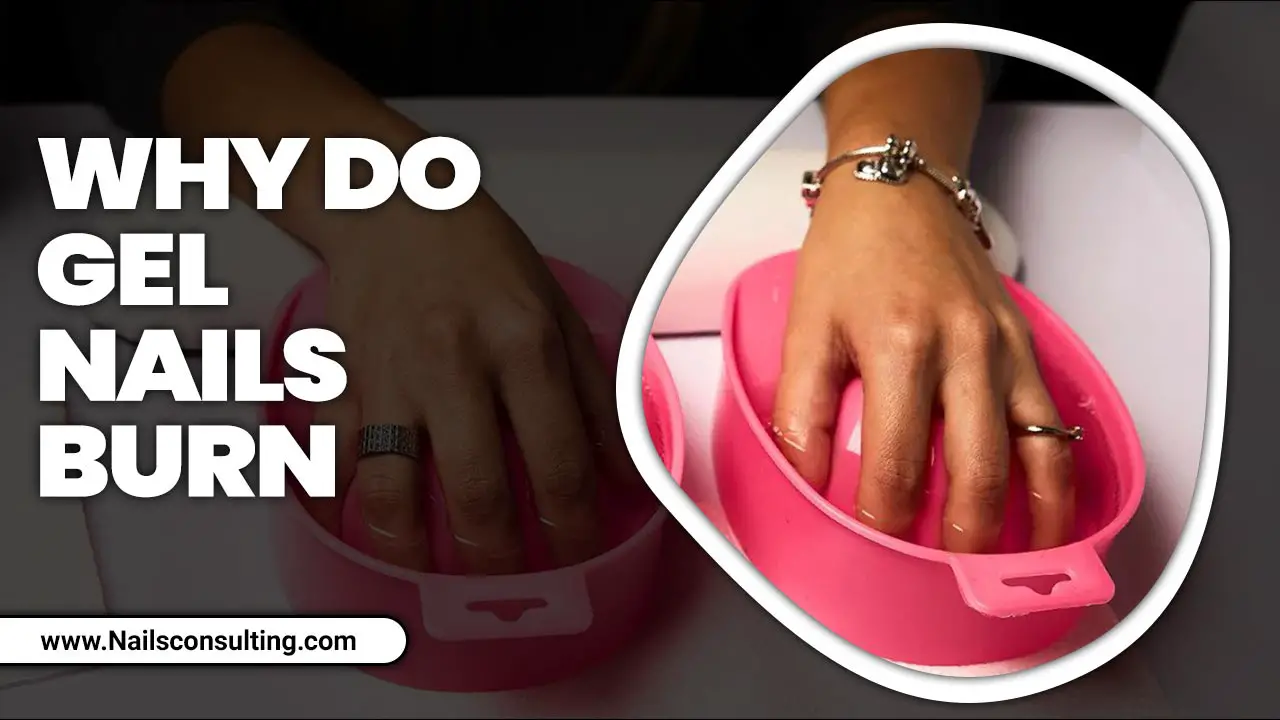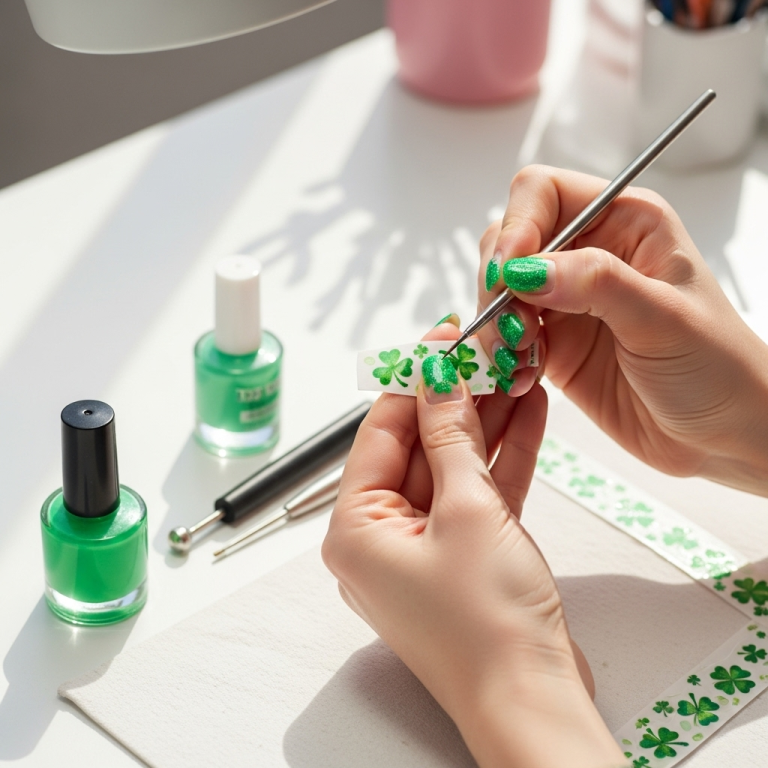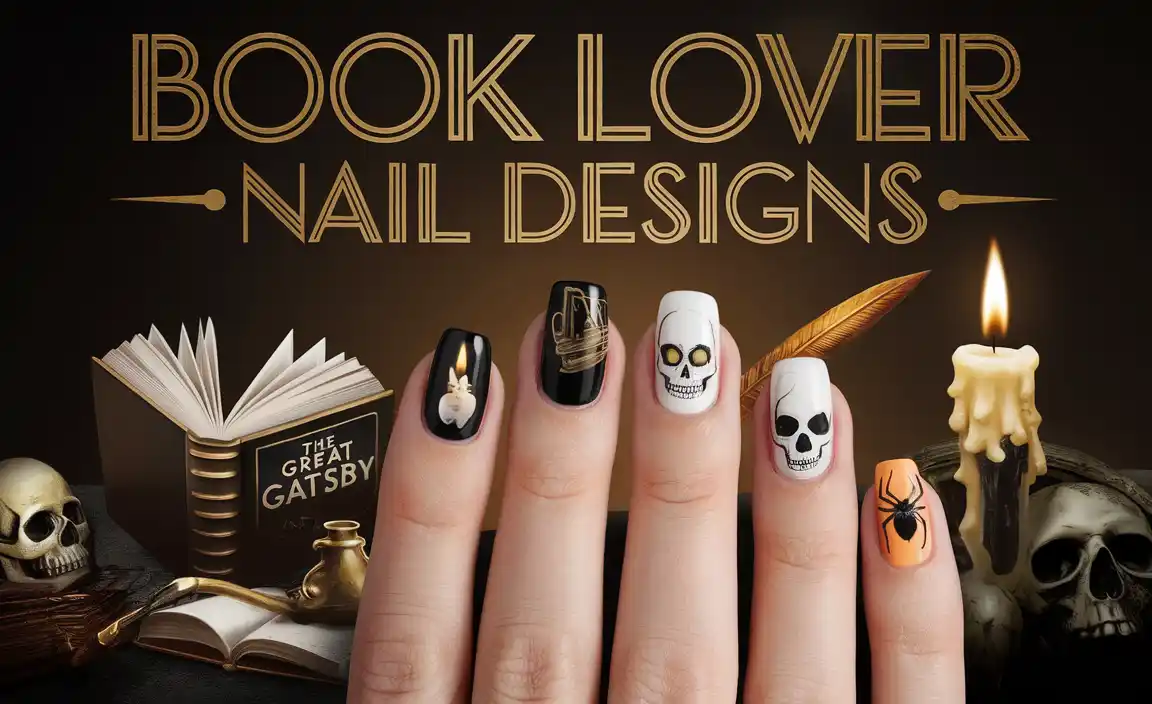Transform your nails with stunning drip effect designs! This easy-to-follow guide shows beginners how to create mesmerizing looks using simple techniques and common tools. Get ready to elevate your nail art game and express your unique style with confidence. Discover proven stunning looks that are achievable right at home.
Want to add a splash of artistry to your nails? Drip effect nail designs are a super fun way to do it! They look so cool, kind of like melted art flowing down your nails. You might think they’re tricky, but I promise they’re easier than they look. Perfect for anyone wanting to try something new, these designs are a fantastic way to show off your personality. Let’s dive into making your nails look amazing with these trendy drip effects!
What Exactly is a Drip Effect Nail Design?
A drip effect nail design is a nail art technique that mimics the look of liquid – like paint, frosting, or even molten metal – artfully dripping down the nail. These designs can range from subtle, elegant lines to bold, statement-making splashes. They add a unique, dimensional feel that catches the eye and makes your manicure stand out from the crowd. It’s all about playing with color and flow to create a visual masterpiece on your fingertips!
Why Are Drip Nail Designs So Popular?
Drip nail designs have become a huge hit for several reasons:
- Unique Aesthetic: They offer a distinct, modern look that’s different from traditional nail art. The flowing lines and color-mixing possibilities are endlessly creative.
- Versatility: You can create drips in almost any color, for any occasion. Think pastel drips for spring, bold neons for summer, deep jewel tones for fall, or metallic drips for a glamorous touch.
- Sense of Movement: The “dripping” appearance gives nails a dynamic, artistic quality. It’s like having mini abstract art pieces on your hands!
- Beginner-Friendly: While they look complex, with the right tools and a little practice, beginners can achieve fantastic results.
- Customization: You can control the thickness, length, and color of the drips, making each design truly your own.
Essential Tools for Creating Drip Nail Designs
Don’t worry if you don’t have a whole nail art kit yet! You can achieve stunning drip effects with just a few key items. Here’s what you’ll need to get started:
- Base Coat: To protect your natural nails and help your polish last longer.
- Nail Polish Colors: Choose your base color and your “drip” colors. Gel polish is great for self-leveling, but regular nail polish works too!
- Top Coat: To seal your design and add shine. A quick-dry top coat is a lifesaver!
- Fine-Tipped Nail Art Brush or Dotting Tool: This is crucial for drawing the drip lines. A brush with synthetic bristles works best for precision.
- Paper Towel or Palette: To wipe excess polish from your brush and practice your lines.
- Cuticle Pusher or Orange Stick: For cleaning up any stray polish around the nail edges.
- Nail Polish Remover: For those inevitable little oops moments!
Pro-Tip: If you’re using regular nail polish, make sure each layer is completely dry before adding the next. This prevents smudging and makes creating clean drips much easier.
Beginner-Friendly Drip Effect Nail Designs & How to Create Them
Let’s get creative! These designs are perfect for dipping your toes (or rather, nails!) into the world of drip art. We’ll start with the basics. Remember, practice makes perfect, so don’t be discouraged if your first try isn’t flawless!
Design 1: Classic White Drips on a Dark Base
This is a timeless look that’s incredibly chic. The contrast between a dark base and bright white drips makes them pop!
- Prep Your Nails: Start with clean, dry nails. Apply your base coat and let it dry completely.
- Apply Base Color: Paint your nails with your chosen dark color (black, navy, deep purple, dark red). Apply two thin coats for full opacity. Let it dry thoroughly – this is key! For regular polish, give it at least 5-10 minutes.
- Load Your Brush: Dip your fine-tipped nail art brush into your white nail polish. You want a good amount of polish, but not so much that it’s clumpy.
- Create the “Top” of the Drip: On one nail, starting near the cuticle or half-way down the nail, make a small dot or a short horizontal line with your white polish. This is where your drip will begin.
- Draw the Drip Line: Gently pull your brush downwards from the dot/line, creating a thin, flowing line. Aim for a natural, slightly uneven curve – that’s what makes it look like a real drip!
- Repeat and Vary: Create a few drips on each nail. Vary the length and thickness of each drip for a more realistic and interesting look. Don’t overdo it; 2-3 drips per nail is often enough.
- Clean Up: Use an orange stick or detail brush dipped in nail polish remover to clean up any wobbly lines or stray polish around your cuticles.
- Apply Top Coat: Once all your drips are perfectly dry, apply a generous layer of top coat to seal the design and add a beautiful shine.
Design 2: Colorful Melts on a Nude Base
This design is bright, fun, and playful. A nude or sheer base lets vibrant colors shine through.
- Prep and Base: Start as usual with base coat.
- Apply Nude Base: Paint your nails with a sheer nude or milky white polish. Apply 1-2 coats, depending on the opacity you desire. Let it dry completely.
- Choose Your Drip Colors: Select 2-3 complementary bright colors for your drips (e.g., pink, orange, yellow for a sunset vibe; or blue, purple, teal for an ocean feel).
- Apply First Drip Color: Using your detail brush, create your first set of drips with your first color. Follow steps 4-7 from “Classic White Drips,” but use one of your bright colors.
- Add Second Drip Color: Once the first color is completely dry, load your brush with your second bright color. Create more drips, slightly overlapping or placing them between the first set of drips. Vary heights and lengths.
- Add Third Drip Color (Optional): If you’re using a third color, repeat the process, layering your new drips amongst the others.
- Clean Up: Carefully clean up any smudges or uneven edges with a remover-dipped brush.
- Top Coat: Apply your top coat for a glossy finish.
Design 3: Metallic Drips for a Glam Touch
Metallics add instant sophistication. Silver, gold, or rose gold drips are perfect for a night out or when you want to feel a little extra!
- Prep and Base: Base coat your nails.
- Apply Base Color: Choose a sophisticated base color like a deep berry, a soft grey, or even a classic black. Apply 1-2 coats and let dry thoroughly.
- Load Metallic Polish: Dip your fine-tipped brush into a metallic polish – gold, silver, or rose gold are gorgeous choices.
- Create Drips: Follow the same drip-creating technique as in Design 1. You can make them thick and bold or thin and delicate. Metallics tend to give a rich, opaque look even in one stroke.
- Add Dimension (Optional): For an extra pop, you could add a second, thinner drip line slightly off-center from the first, using a different metallic color, or even a black outlining a gold drip.
- Clean Up: Tidy up any messy edges with nail polish remover.
- Seal with Top Coat: Apply your top coat to protect the metallic sheen and the overall design.
Tips and Tricks for Perfect Drips
Mastering the drip effect takes a little practice, but these insider tips will help you achieve salon-worthy results:
- Polish Consistency is Key: Your polish shouldn’t be too thick (clumpy drips) or too thin (runny drips that spread). If using regular polish, a fresh bottle usually has the best consistency. You can add a tiny drop of nail polish thinner if it’s too thick, but use sparingly. Gel polish often self-levels beautifully, making it easier to work with.
- Brush Control: Hold your brush at a slight angle when pulling down to create the drip line for a smoother, more natural appearance. Don’t press too hard.
- Work in Layers: If you want bolder or thicker drips, it’s better to do 2-3 thin coats of polish rather than one thick one. Let each layer dry before applying the next.
- Negative Space is Your Friend: Don’t feel the need to cover the entire nail with drips. Letting some of the base color show through can make the design more sophisticated and easier to execute.
- The “Pause” Technique: When creating a drip, go slow. You can draw the initial dot, pause, then gently pull down. This gives you more control.
- Clean as You Go: A detail brush with remover is your best friend for instant touch-ups. It’s much easier to fix a small mistake immediately than after it dries.
- Utilize a Palette: Squeeze a small amount of polish onto a mixing palette, a piece of foil, or even a plastic lid. This prevents you from contaminating your main polish bottle and allows you to get the right amount of product onto your brush.
- Patience with Regular Polish: If you’re using traditional nail polish, ensure each layer is bone dry before adding another. This can take a while! Consider using a quick-dry top coat after the color coats have dried to speed things up. For gel polish, cure each layer under a UV/LED lamp as per the manufacturer’s instructions.
Popular Color Combinations for Drip Nails
Choosing the right colors can make all the difference! Here are some popular and stunning combinations to inspire you:
| Theme/Vibe | Base Color Suggestions | Drip Color Suggestions | Why It Works |
|---|---|---|---|
| Classic & Chic | Black, Navy, Deep Burgundy | White, Cream, Silver | High contrast, sophisticated, always in style. |
| Soft & Pastel | Milky White, Light Pink, Baby Blue | Pastel Pink, Lavender, Mint Green, Butter Yellow | Ethereal, dreamy, perfect for spring and summer. |
| Bold & Bright | White, Black, Nude | Neon Pink, Electric Blue, Bright Orange, Lime Green | Eye-catching, energetic, fun for festivals or making a statement. |
| Glowy Sunset | Sheer White, Light Peach | Yellow, Orange, Pink, Red (blended slightly if skilled) | Warm, inviting, captures the beauty of a sunset sky. |
| Moody & Edgy | Dark Grey, Deep Teal, Forest Green | Black, Deep Plum, Metallic Gold or Bronze | Mysterious, sophisticated, with a touch of dark glamour. |
| Sweet Treat | Light Pink, White, Cream | Chocolate Brown, Hot Pink, White (like frosting!) | Playful, dessert-inspired, adorable for sweet occasions. |
| Monochrome | Any Color (e.g., light blue) | A gradient of lighter to darker shades of the same color (e.g., light blue, medium blue, navy) | Understated elegance, modern, allows for subtle depth. |
Common Mistakes to Avoid
Even with the best intentions, sometimes things go a little awry. Here are some common pitfalls and how to sidestep them:
- Applying Drips to Wet Polish: This is the #1 cause of smudging and blurry lines. Always wait for your base color and any previous drip layers to be completely dry.
- Brush Too Dry or Too Wet: If your brush has too little polish, your line will be patchy and weak. If it has too much, it will spread uncontrollably or look clumpy. Find that sweet spot!
- Pulling Too Fast: Trying to rush the drip line down the nail will result in an uneven, potentially broken line. Slow and steady wins the race.
- Overcrowding the Nail: Too many drips can make the design look messy instead of artistic. Sometimes less is truly more. Aim for balance.
- Not Cleaning Up Edges: A little polish on the skin can easily detract from an otherwise perfect design. Keep that detail brush with remover handy!
- Skipping the Top Coat: Your beautiful drips need protection! A top coat seals the design, prevents chipping, and adds that essential glossy finish.
The Science Behind Nail Polish and Drips
Ever wonder why nail polish behaves the way it does? Understanding a little of the science can help you master application. Nail polish is essentially a mixture of pigments, solvents, and polymers suspended in a liquid. When you apply it, the solvents begin to evaporate, allowing the polymers to form a hard, flexible film. This is what creates the color layer.
For drip designs, a key factor is the viscosity of the polish. Polishes that are too thin can run and spread too quickly, making it impossible to control the drip shape. Conversely, polish that’s too thick won’t flow smoothly. Gel polishes are formulated with photoinitiators and monomers/oligomers that polymerize (harden) when exposed to UV or LED light. This curing process allows gel polish to create a smooth, self-leveling surface that’s excellent for drip effects, as it generally stays put until cured.
When creating drips, you’re essentially aiming for a controlled flow down the nail’s surface. The angle of your brush, the amount of polish, and the surface tension of the polish all play a role. A slight downward pull leverages gravity while the brush guides the flow. For a more complex look, consider gradient drips. This involves blending colors together, much like how paint pigments interact. This is easier with gel polish as you can blend colors before curing.
Taking Your Drip Designs to the Next Level
Once you’ve mastered the basic drips, you might be ready to experiment! Here are some ideas:
- Ombre Drips: Instead of solid colors, create drips that transition from one color to another. This is easier with gel polish.
- Multiple Colors Per Drip: Try creating a single drip line that starts with one color at the top and subtly blends into another color as it flows down.
- 3D Drips: Use acrylic gel or a thicker 3D gel medium to create raised drips that have a very pronounced texture. These look incredibly impactful.
- Reverse Drips: Instead of dripping downwards, try creating drips that appear to be dripping upwards from the free edge of the nail.
- Drips with Accents: Pair your drips with other nail art elements like glitter, rhinestones, or simple geometric shapes.
- French Tip Drips: Combine a classic French manicure with drips that flow from the white tip down the nail.
Frequently Asked Questions about Drip Effect Nail Designs
<h3



